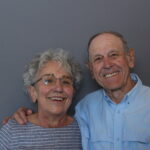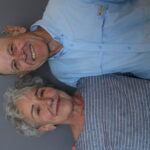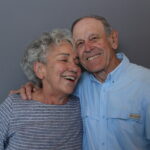Description
Theodora Niemeyer (82) interviews her friend Roger Norgaard (83) about his childhood, his golfing career, his experience flying helicopters for the U.S. Air Force during the Vietnam War, and the story of how he and Theodora, who were high school friends, reunited later in life.Subject Log / Time Code
TN recalls how she and RN met.
RN remembers how his family celebrated the end of World War II.
RN tells the story of how he learned to "tie flies."
RN talks about the impact that golf has had on his life.
RN recalls why he decided to join the U.S. Air Force Reserve Officers' Training Corps.
RN explains why he decided to learn to fly helicopters.
RN shares the story of the time he ran into a childhood friend in Thailand while serving the U.S. Air Force during the Vietnam War.
RN talks about some of the leaders he flew as a helicopter pilot.
RN explains how he ended up working as a helicopter pilot in Yellowstone National Park and Grand Teton National Park.
RN describes his job as a helicopter pilot in more detail.
RN tells the story of how he and TN were reunited as adults after being friends in high school.
Participants
- Theodora Niemeyer
- Roger Norgaard
Recording Locations
Missoula Public LibraryVenue / Recording Kit
Tier
Initiatives
Keywords
Subjects
Places
- Bad Rock Canyon
- Bangkok
- Bemidji
- Brazil
- Coram
- Emory Creek
- Flathead River
- Grand Teton National Park
- Ho Chi Minh Trail
- Idaho
- Kalispell
- Laos
- Martin City
- Minnesota
- Missoula
- Missoula County High School
- Montana
- Polson
- Saigon
- Saint Maries
- Sentinel High School
- Shady Grove Motel
- South Vietnam
- St. Ignatius
- thailand
- The Hot Spot
- University of Montana
- Vietnam
- Washington DC
- Yellowstone National park



